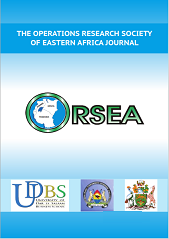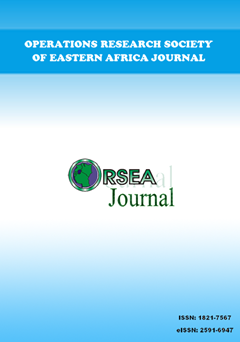Financial Sector Reforms and Economic Growth-Nexus in Tanzania
Abstract
A sound financial system plays an important role in augmenting economic growth by capital accumulation, technological advancement and expansion of economic opportunities. This study is therefore underpinned by quantitative and qualitative
methods in uncovering the finance–growth nexus in post reform Tanzania from 1980-2021. The analysis is based on the ARDL and Toda-Yamamoto causality approaches. The findings reveal insignificant, short-run and long-run effects of the financial development index on economic growth in Tanzania. However, the results are significant when ratios of extended broad money, domestic credit to the private sector and banks deposits to GDP are used as proxies for financial development. The coefficients for domestic credit to the private sector and banks deposits are positive and statistically significant at 5% and 10%, respectively, in the long-run.
Likewise, in the short-run all proxies for financial development indicators are statistically significant with the correct sign, except the extended broad money which is negative. Population growth, a proxy for human capital harms growth in the long-run, while in the short-run it promotes economic growth. Inflation exerts a significant short-run effect on economic growth, while in the long-run,
it harms growth. The regime change dummy is positive in the long-run. The causality test suggests that the finance-led hypothesis holds for Tanzania. The results call for further financial liberalisation through policies that promote a competitive, efficient, inclusive financial sector, and macroeconomic stability, including low and stable inflation. Indeed, such policies are the pre-requisites
for financial development and thus economic growth.
Keywords: Financial Sector Reforms, Economic Growth, ARDL, Tanzania






